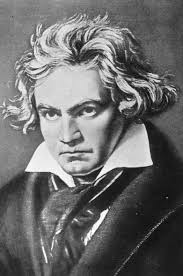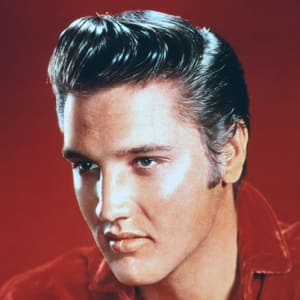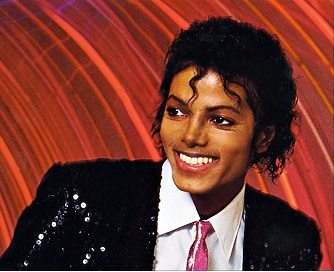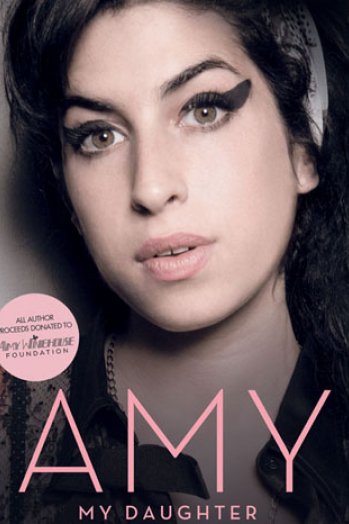History of Music
 In The Beginning
Music has been around for as long as people have, which is a long, long time. Very early music
probably involved people singing prayers for good weather, and successful hunting for food and
animal skins which were eventually used to make drums. Music was not written down back then
and, believe it or not, there were no recordings of music made then either.
In The Beginning
Music has been around for as long as people have, which is a long, long time. Very early music
probably involved people singing prayers for good weather, and successful hunting for food and
animal skins which were eventually used to make drums. Music was not written down back then
and, believe it or not, there were no recordings of music made then either.
(The Middle Ages - approximately 476 - 1500)
Pope Gregory I created a way to explain the musical scales that were
used in church music at the time. He also gave the notes their names which are the same ones we
use today and began to write music down for the first time. Pope Gregory also gave the world the
Gregorian chant. This is a simple melody that was sung by monks who would all sing the same
note at the same time.
YouTube Example: Gregorian Chant (Advocatam) Llibre Vermell de Montserrat
 (The Renaissance - approximately 1450 - 1600)
(The Renaissance - approximately 1450 - 1600)
This time period in the history of music also featured music written for singers only. This music,
often called a madrigal, was different than the Gregorian chant because the singers sang different
notes at the same time instead of having them all sing the same notes. Giovanni da Palestrina was
a famous Italian composer during the Renaissance and a favourite of the Pope.
YouTube Example: Palestrina - Jesu, rex admirabilis - Gardiner
(The Baroque Era - 1600 - 1750)
Baroque (pronounced ba-roke) music had melodies with a lot of notes and, at times, extra notes
to make the melody of a piece of music sound even fancier. Composers tried new ways of putting
music together at this time. They also painted musical pictures with notes to show feelings such
as being happy or sad, and to show nature.
Antonio Vivaldi was an Italian musician who was one of the best known composers of the
Baroque era, and one of the busiest. He composed almost 700 pieces of music of which The Four
Seasons is his most famous. Each section of this piece paints a musical picture of one of the
seasons of the year.
YouTube Example: Gidon Kremer - Vivaldi's Four Seasons - Spring (I. Allegro)
(The Classical Era - 1750 - 1825)
Music of the Classical era was more plain than music of the Baroque era. The three most
important composers of the Classical era were Haydn, Mozart and Beethoven.
Joseph Haydn was born in Austria and is known as the father of the symphony which is a long
piece of music written for a large number of many different kinds of instruments.
YouTube Example: Haydn : Symphony No. 94, 'Surprise', 2nd movement
(The Romantic Era - 1825 - 1900)
Romantic music focused on emotions and expressing your feelings through music. Three of the
big names of the Romantic era were Frédéric Chopin, Johannes Brahms and Franz Liszt.
Chopin’s music continues to be performed by pianists around the world and is thought by many
musicians to best represent the spirit of the Romantic Era of music. Although Chopin was only
39 years old when he died, his name lives on as one of the greatest musicians who ever lived.
YouTube Example: Brahms Symphony No. 2 in D, Op. 73 - I
 (The Popular Era - 1950's )
(The Popular Era - 1950's )
The 1950's
The 1950's were a time of changes and the music of the decade both reflected the cultural changes that were happening while still holding on to the societal norms of the past. Following the detrimental effects of World War II, the United States was about to embark on a musical journey that would change the face of music for decades to come.
Popular music dominated the charts for the first half of the decade. Vocal driven classic pop replaced big band/swing at the end of World War II, although it often used orchestras to back the vocalists. 1940s style Crooners vied with a new generation of big voiced singers, many drawing on Italian Canto Bella traditions.
Rock and roll dominated popular music in the later half of the 1950s. The musical style originated and evolved in the United States during the late 1940s and early 1950s, and quickly spread to much of the rest of the world. Its immediate origins lay in a mixing together of various black musical genres of the time, including rhythm and blues and gospel music; with country and western and Pop.
Elvis Presley was Born on January 8, 1935, in Tupelo, Mississippi, Elvis Presley came from very humble beginnings and grew up to become one of the biggest names in rock 'n' roll. By the mid-1950s, he appeared on the radio, television and the silver screen. On August 16, 1977, at age 42, he died of heart failure, which was related to his drug addiction. Since his death, Presley has remained one of the world's most popular music icons.
 (1960's )
(1960's )
The 1960's were a time of upheaval in society, fashion, attitudes and especially music. Before 1963, the music of the sixties still reflected the sound, style and beliefs of the previous decade and many of the hit records were by artists who had found mainstream success in the 1950s, like Elvis Presley, Ray Charles, Dion, and The Everly Brothers. In 1963 and the years to follow, a number of social influences changed what popular music was and gave birth to the diversity that we experience with music today. The assassination of President Kennedy, the escalation of the war in Vietnam and the forward-progress of the Civil Rights Movement all greatly impacted the mood of American culture and the music began to reflect that change. The "British Invasion" also began around 1963 with the arrival of The Beatles on the music scene and the type of rabid fandom that followed them would change the way people would view and interact with music and musicians forever. In this section we will cover the history of the "British Invasion", Motown and R&B, Folk and Protest music, and the large amount of variation that emerged in Rock music throughout the sixties.

(1970's )
AC/DC
More than three decades into a career that shows no signs of slowing down or letting up, AC/DC, like electricity itself, provides the world with an essential source of power and energy. Since forming in 1973, AC/DC's high voltage rock 'n' roll has flowed out into the world via consistently sold-out concert tours and global sales totaling more than 150 million albums and counting.
Sony BMG Music Entertainment's #1 best-selling catalog act worldwide, AC/DC has sold nearly 70 million albums in the U.S. alone, making AC/DC one of the five top-selling bands in American music history. One of the group's best-loved works, the enormously successful and influential Back In Black, has achieved RIAA "Double Diamond" status, for sales in excess of 22 million copies in the United States, and is the U.S.'s fifth largest-selling album ever.
On March 10, 2003, AC/DC was inducted into the Rock and Roll Hall of Fame at a ceremony at the Waldorf-Astoria in New York City. Aerosmith's Steve Tyler performed the induction, sang "You Shook Me All Night Long" with AC/DC during the ceremony and described the group's signature power chords and timelessly enduring rock 'n' roll as "...the thunder from Down Under that gives you the second-most-powerful surge that can flow through your body."
 (1980's )
(1980's )
Micheal Jackson
Known as the "King of Pop," Michael Joseph Jackson (August 29, 1958 to June 25, 2009) was a best-selling American singer, songwriter and dancer. As a child, Jackson became the lead singer of his family's popular Motown group, the Jackson 5. He went on to a solo career of astonishing worldwide success, delivering No. 1 hits from the albums Off the Wall, Thriller and Bad. In his later years, Jackson was dogged by allegations of child molestation. He died of a drug overdose just before launching a comeback tour in 2009.
The Moonwalk
On a 1983 television special honoring Motown, Jackson performed his No. 1 hit "Billie Jean" and debuted his soon-to-be-famous dance move, the Moonwalk. Jackson, a veteran performer by this time, created this step himself and choreographed the dance sequences for the video of the album's other No. 1 hit, "Beat It."
 (1990's )
(1990's )
there was a change starting in the mainstream radio playlists. While the sexual lyrics of techno and hip-hop still dominated the airwaves, a new style of rock music was making an impact. Bands like Pearl Jam and Soundgarden were offering youngsters a new type of rock music to listen to that contained catchy lyrics about the angst and trials of teenage years. These songs also seemed to send a message about the status quo of society and the helplessness that was felt among the teens and early adults of the era. Songs like Nirvana’s “Smells Like Teen Spirit” spoke about a teen revolution in a seemingly meaningless world. The song also marked the beginning of the grunge and alternative rock phase that remained popular throughout the mid-1990s.
By late 1995, many young people were getting tired of the hopelessness that the grunge and alternative bands were inundating the airwaves with. They were ready for something fresh and new. As a result of this feeling, there was a movement of “happy rock” that was in direct contrast to the negativity of the grunge bands. Bands like Hootie and the Blowfish, Sister Hazel, and The Bodeans perpetuated upbeat melodies and positive lyrics that many people were ready for after years of negativity. These bands also created a resurgence in songs that dealt with love and relationships through ballads and happier-sounding songs. “All For You” by Sister Hazel was a popular song about the things a person does for another in a relationship while, contrastingly, “Let Her Cry” by Hootie and the Blowfish dealt with a tearful breakup that deeply hurt both people.
The “happy rock” years in the mid-90s helped to pave the way for the “bubblegum pop” that followed in the waning years of the decade. Artists like Britney Spears and Christina Aguilera dominated the mainstream pop music scene well into the late 1990s and beyond. The sexual lyrics and innuendos also came back in the songs of this era that was once popular in the early years of the decade, but they were more blatant than before. The videos were more sexual in nature, too. The later years of the decade also saw a new popularity for traditional boy bands. The Backstreet Boys, 98 Degrees, and N’Sync enjoyed the same amount of, if not more, popularity than older boy bands like New Kids on the Block from the late 1980s.
The music in the 1990s went through a series of changes in regards to the mainstream radio airwaves. Ironically, it was nearly a full-circle of styles and tastes that resulted in recreating the mainstream sound that is strongly reminiscent of popular music in the 1980s. Many of these bands and artists had staying power, though. Nearly a decade later, we are still being exposed to many of their antics or effects that they had on the musical front. Fortunately, several of these acts have matured in recent years and continue to produce quality music while others with less talent have fallen by the wayside in recent years.
 (2000's )
(2000's )
The 2000s were for the most part, nondescript, as pop music fragmented into smaller trends. Unlike many past decades, the 2000s did not see the creation or emergence of many styles, with the exception of a few indie-related genres such as emo and electronic subgenres like Liquid funk and UK funky. Convergence of different styles was one of the more defining features of the decade, as seen with the creation and commercial success of the British grime genre and trap and chillwave in the United States.
Nevertheless, distinguishable elements can be attributed to the decade from a musical point of view, such as the common and mainstream usage of pitch correction software Auto-Tune, as well as the rise of the internet, media player programmes such as iTunes and music & video sharing websites such as YouTube. Also, most songs put less focus on elaborate bass-lines that use bass guitars and bass synthesisers in favour of louder and booming drums, and used even more electrical instruments.
Outside of North America, Britpop, post punk revival and alternative rock were at the height their popularity with acts such as The Libertines, Oasis, Lynda Thomas, Travis, Dido, Blur, The Hives, Björk and Radiohead, which still continued at the top of the major charts in the rest of the world since the 1990s.